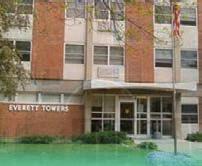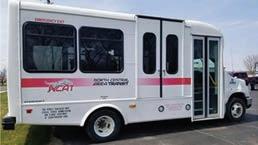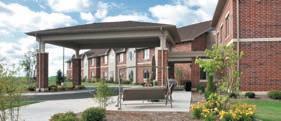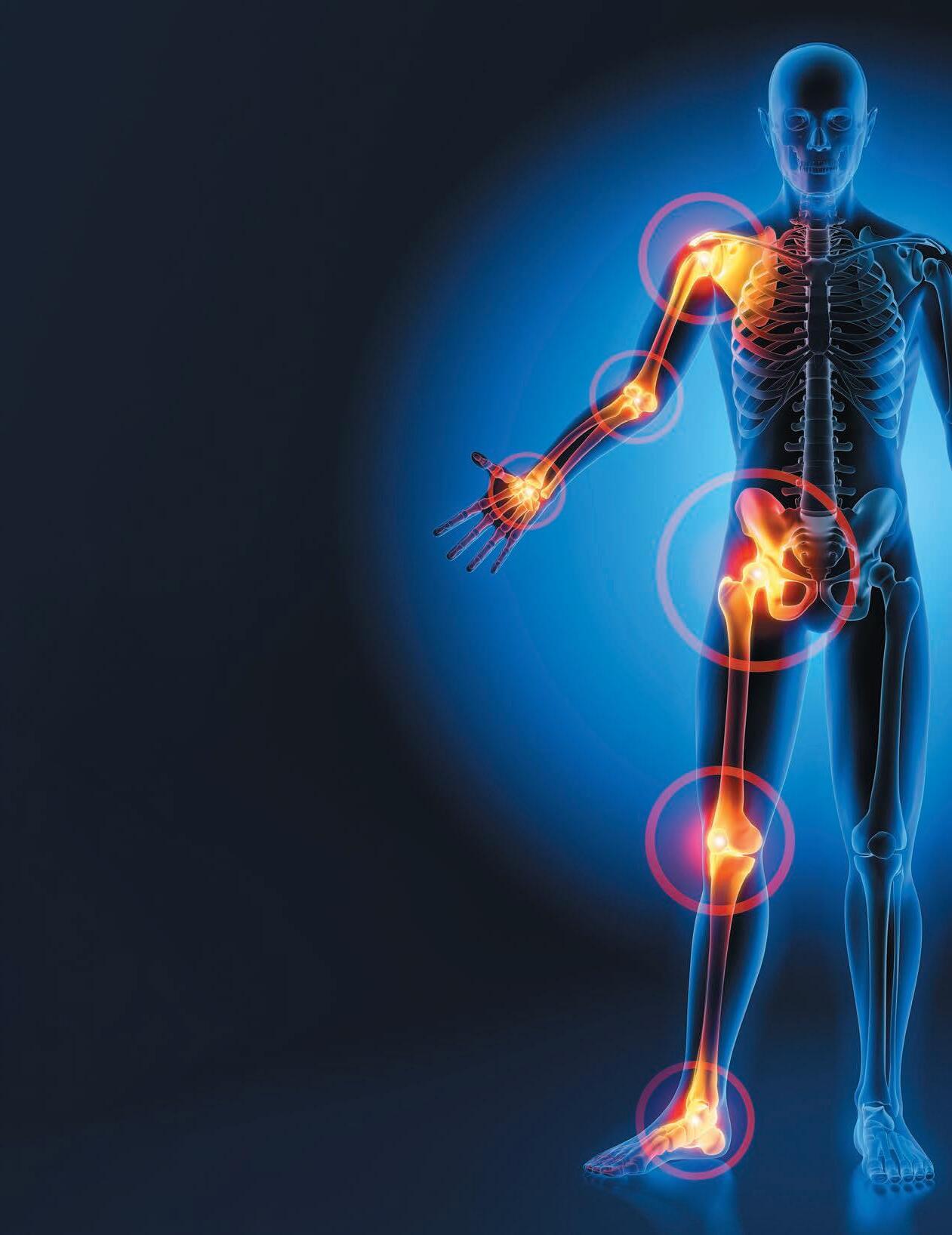



















































Do

















you have limited income and are in search of an a ordable and nice place to live?
The Public Housing and Housing Choice Voucher (Section 8) programs provide a ordable housing to over 1600 families in our community. Stretching across LaSalle County, HALC owns and operates more than 1000 units of a ordable housing.


Section 8 vouchers are available in both Grundy & LaSalle Counties. Program participants can use their Section 8 vouchers in the private market with participating landlords. This is a great way to get the assistance you need while having the exibility to nd a location near desirable neighborhoods, school districts, places of employment, or communities of choice.
Public Housing provides families, seniors, singles, and people with disabilities the housing assistance they need to live in a safe, a ordable and well maintained home.
• We have rents as low as $50 a month, based on income, and deposits starting at $100.
• Small pets are permitted in most locations.
Applications for public housing and lottery applications for Section 8 Housing Authority programs can be obtained at our o ces in:
• Ottawa: Central HALC O ce, 526 E. Norris Dr.
• LaSalle: Centennial Courts, 2222 N. Tonti St.
• Streator: Evans Heights, 1401 N. Otter Creek Rd.
• Streator: Fornof Manor, 606 E. Morrell St.

Balance issues can pose a serious threat to individual health. When a person experiences issues with their balance, they may experience dizziness, lightheadedness and feel as if a room is spinning. Each of those factors can increase the risk for potentially harmful falls.
Seniors may not have the market cornered on balance issues, but the National Institute on Aging notes that many older adults experience such problems. The NIA also notes that people are more likely to have balance problems as they grow older. A number of variables can contribute to balance problems, including medications, health conditions like heart disease and vision problems, and alcohol consumption. The NIA notes that the remedy to balance issues may depend on what’s causing them, though some exercises that require individuals to move their heads and bodies in a certain way can help treat some balance disorders. A physical therapist or another professional with an understanding of the relationship between balance and various systems in the body also may be able to help.
When a specific cause, such as hypertension or low blood pressure, is identified, health care teams may be able to recommend various approaches to help seniors get their balance back.
A 2015 study published in The Journal of Physical Therapy Science found that hypertension, also known as high blood pressure, can negatively affect balance. The study found that this occurs because hypertension damages the large arteries and decreases microcirculation in specific functional areas, ultimately resulting in impairment that reduces a person’s ability to maintain a stable posture. Taking steps to address hypertension, such as eating less sodium, maintaining a healthy weight and exercising regularly, may also lead to a reduction in balance problems related to the condition.
Low blood pressure also can contribute to balance problems. According to the American Geriatrics Society, sudden low blood pressure, which is also referred to as orthostatic hypotension, can manifest when sitting up and standing up. When it does, a person may experience dizziness or lightheadedness, which may last just a few seconds or several minutes. The AGS notes that dizziness related to low blood pressure also may appear within one to three minutes of sitting up or standing up, which means individuals may be vulnerable to falls even when they initially feel fine after sitting up or standing up. The NIA reports that individuals with low blood pressure can manage the issue by drinking plenty of fluids, including water, and avoiding alcohol. In addition, pay careful attention to posture and movements and make a concerted effort to stand up slowly.
Balance issues are often linked to aging, but that does not mean seniors are helpless against symptoms like dizziness and lightheadedness that are linked to problems with balance. Working with a health care team and identifying potential causes of balance issues can help seniors improve their health outcomes. FP242674
















Cognitive decline is on the minds of many adults as they get older. Memory loss and trouble processing things can sometimes be a side effect of aging, as Everyday Health says the brain changes in size and structure as a person gets older. These changes can affect how well the brain works over time. Furthermore, illnesses affecting the brain, such as Alzheimer’s disease, may start showing their symptoms in people when they’ve reached their mid-60s, says the National Institute on Aging.
Cognitive decline and dementia are not a certainty of aging. But older adults interested in strengthening their brains may want to consider these strategies.
High blood pressure can increase the risk of heart disease and stroke. Maintaining healthy blood pressure and cholesterol levels is associated with better cognitive function, according to data published in 2021 in the Journal of Alzheimer’s Disease.

Harvard Health says the more senses used in learning something, the more of the brain that is involved in retaining the memory. Studies have shown that images paired with pleasant aromas leads to better recall later on.
Staying physically active helps maintain blood flow to the brain, which also helps reduce the risk for hypertension.
According to Cone Health Medical Group, studies show eating fish rich in omega-3 fatty acids, like tuna, salmon and mackerel, decreases risk for cognitive decline. People should avoid saturated fats, trans fats and hydrogenated oils.


According to a study in the journal Neurology, regular reading and writing in one’s older years reduced the rate of memory decline by 32 percent. Joining a book club or simply reading more on one’s own can improve cognition. Similarly, writing improves memory and communication abilities and can help strengthen the brain as well.


Tea and coffee can improve alertness and focus, as they’re rich in polyphenols and antioxidants. A Place for Mom says caffeine in these beverages can help solidify new memories. Avoid drinking sugary beverages and limit consumption of alcohol, as neither boasts brain-boosting properties. Keeping the brain sharp is a multilayered process that involves healthy foods and beverages, exercise and brain-stimulating activities. FP242677





Caregivers come from all walks of life. Doctors and nurses may be the frontline medical providers people encounter most frequently, but there are plenty of others who do their part to maintain the well-being of individuals, including home health aides.
Home health aides, sometimes called personal care aides, are brought in to assist a person with activities of daily life. An HHA typically helps a person who may need some assistance with tasks they cannot perform due to illness or disability. HHAs may work in a person’s home, in a group home or in another care facility.
AARP says home health aides are considered health care paraprofessionals and must meet established training requirements, which vary by location.
HHAs may perform various

duties, including:
• assistance with personal care, such as dressing, toileting, feeding, and moving from bed to chair, etc.
• checking vital signs
• monitoring a client
• light housekeeping
• meal planning and cooking
• picking up prescriptions
• companionship
HHAs typically will not provide skilled nursing care and may not be able to offer recommendations on treatment or medications.
Individuals can find the services of HHAs who may work independently or are placed through agencies. Sometimes a doctor or hospital will have connections to HHA services and can make referrals. It can be useful to interview several potential HHAs to find one who will fit with the needs and personality of the person requiring assistance. A good HHA will be compassionate, patient and flexible. As illness or injury also can affect a person’s mood, HHAs must be able to adjust if a client is reluctant to receive help or is depressed or anxious from his or her limitations.
Home health aides serve vital roles in the health care community by providing care and companionship to those who can no longer live independently.
TF245909
· Comprehensive audiological evaluations and functional communication needs assessments
· Fitting and programming of digital hearing aids
· Tinnitus assessments and Tinnitus Retraining Therapy (TRT)
· Unbundled, transparent hearing aid prices
· Routine hearing aid maintenance
· Hearing aid repairs, batteries and supplies
































“Dr. Kendra and Dr. Kristin, along with office manager, Maricia, are caring, professional and very personable. They make time to be available to ensure that their patients are informed and well cared for.” – Mary Jo F.
“Kendra and her staff are great. Very professional, kind and competent. I’ve been working with them for 3 years now and couldn’t be happier. I highly recommend!!” – Katie W.
t L-R: Kristin Williford, Au.D.; Kendra Theodosopoulos, Au.D.; Maricia Cocanour, Patient Care Coordinator
DID YOU KNOW… hearing loss relates to common medical conditions?



Let us make sure you have a nancial plan in place that helps you enjoy your life to the fullest. We o er top-notch service and advice you need to build a plan that ts your unique goals and objectives. Trust. Integrity. Mutual Respect. We look forward to serving you and encourage you to stop by.



ndividuals who are 60 and older are accustomed to making routine trips to the pharmacy to fill prescriptions. In fact, the Centers for Disease Control and Prevention notes that roughly 84 percent of adults between the ages of 60 and 79 use one or more prescription medications.
Prescription medications prolong individuals’ lives and can make their daily lives more comfortable and manageable. As individuals age, their doctors may recommend various prescriptions, some of which they may need to take long-term. Managing multiple medications at once can be difficult, as it can be easy to lose track of which medications have been taken when individuals are prescribed more than one. In recognition of that difficulty, the National Institutes of Health offers the following tips to help individuals safely manage multiple medications.
• Maintain an updated list of all medications you take. The NIH notes a medication list should include both prescription and over-the-counter medications. OTC medicines include vitamins, supplements and herbal products.
• Share your medication list with family or close friends. A medication list should be accessible, and seniors can even share it with close family members, who can then advise medical professionals like EMTs, nurses and
emergency room doctors which medicines you are taking in emergency situations when you may not be conscious.
• Routinely review your medicine list with health care providers and pharmacists. The NIH recommends individuals discuss their medicines with their physicians during each appointment. Ask if all medicines still need to be taken and if dosages should be changed. When visiting specialists, be sure to provide a list of all medications you are currently taking.
• Ask questions about newly prescribed medications. Drug interactions can be dangerous, so it’s important to ask if and how any newly prescribed medications may interact with drugs, vitamins or supplements you are already taking.
• Alert health care providers to any new side e ects. Immediately contact your physician if any new side effects present. The NIH recommends individuals continue to take their medications unless their doctor says otherwise.
• Use a pill organizer. A pill organizer makes it easy to manage multiple medications and can help individuals remember which pills they have taken. Millions of individuals 60 and older take more than one medicine each day. Some simple strategies can ensure seniors safely manage their medications. FP242672


A nutritious diet is a key component of a healthy lifestyle. And for seniors, the right diet can be a key part of treating any number of health issues. In fact, changing one’s diet may be something seniors can consider if they are feeling sluggish.
Food can be a helpful ally for seniors dealing with fatigue and low energy. WebMD says eating a balanced diet is one of the ways to improve low energy levels, and that balanced diet should include certain foods that are natural energy boosters.
• Whole grains: Switching refined grains for whole grains is a good way to boost energy. These grains are full of complex carbohydrates that help boost metabolism and provide energy. They’ll also work longer in the body than the more refined options. Swap out “white” prod-
ucts like breads and rices for whole wheat or brown rice.
• Lean protein sources: While protein does not give the same quick boost of energy as a high carbohydrate meal, it will help fuel the body and keep a person feeling full longer. According to Discovery Senior Living, protein helps increase concentration levels, produces stronger muscles and helps maintain optimal blood sugar levels. Chicken, tuna and legumes are some notable protein sources.
• Nuts: Most nuts are a complete package that provide healthy fats, proteins and amino acids that are good for the body. The fiber and carbohydrates in nuts digest more slowly and help provide a steady supply of energy throughout the day. Replace croutons in salads with nuts, or sprinkle some nuts on

oatmeal at breakfast.
• Fruits and vegetables: Berries, sweet potatoes, dark, leafy greens, and other produce are low-calorie, low-sugar options for snacks and sides that boost health. They’re full of fiber and antioxidants that can ward off
illness, and they can provide an energy boost as well. Berries and vegetables can be added to smoothies or salads.
The right foods can help seniors restore energy levels and promote overall health.
FP242675






Just like with your muscles, the neurons that help us hear are “use it or lose it!” You will get better benefit from your hearing aids if you get them sooner. This way, your brain won’t forget how to process sounds.
Treating you hearing loss has correlations with positive brain functions including memory health and attention.
Untreated hearing loss is correlated with higher rates of depression , anxiety, social isolation and withdrawal, cognitive decline, and overall lower quality of life.


If you are searching for a compassionate senior care community, look no further than Evergreen Place Supportive Living in Streator. Our community provides compassionate care and support to seniors in a beautiful setting with a variety of upscale amenities.
What is a supportive living community, and how does it differ from the more commonly understood assisted living option? The answer is quite simple – the services, amenities and care are all exactly the same. The only difference is that supportive living communities, like Evergreen Place in Streator, work with select insurance plans, Medicare, Medicaid and Veterans programs. The supportive living program in Illinois accepts a broader range of benefits and payment options so as to make senior living options an affordable and realistic option for every senior. Assisted living communities accept only private pay and long-term care
insurance.
The services at a supportive or assisted living community are for seniors who want to maintain their independence while also receiving some assistance with activities of daily living. Residents live in their own apartments within the community, but have help and support from the Wellness Team available at any time.
The Wellness Team provides personalized care services that are dependent upon the resident’s individual needs and preferences. An evaluation that includes the potential resident’s physician will determine the level of care that is appropriate. Supportive living believes in an interdisciplinary approach: all departments work together to provide seamless communication and care to residents and their families.
Residents are free to come and go as they please, in fact, many residents still drive their own cars. Building maintenance teams take care of the upkeep of each apartment, so
residents have the freedom to spend their time doing activities and hobbies they love, rather than changing light bulbs or air filters.
Today’s supportive and assisted living communities boast restaurant-style dining, giving residents options for their meals and the ability to provide recipes and input to the Culinary Team. Lifestyle Enrichment programs provide activities that are focused on resident’s interests. Ensuring that resident continue to live a rich and fulfilled life is an important part of the culture at Evergreen Place. We are also a pet-friendly community, allowing residents to bring their beloved companions with them.
Evergreen Place is committed to assisting residents in living life their way.
If you would like to learn more about supportive living or Evergreen Place, please call us today at (815) 672-0903, or visit our website at www.EvergreenSLC.com/Streator.



Standard services available at Evergreen Place and other assisted or supportive living communities will include:
• 24-hour Wellness Support
• Routine medication management
• Discreet Personal Assistance
• Three nutritious meals each day, served restaurant style
• Housekeeping services
• Laundry Services
• Senior-friendly transportation
• Social Activities and engaging programming


isn’t a single disease, but a term that refers to more than 100 conditions characterized by joint pain or joint disease, says the Arthritis Foundation. Arthritis is the leading cause of disability in the United States, and affects women at a proportionally higher rate than men.
Arthritis looks and feels different to the various people who experience it, and symptoms can vary from day to day depending on variables such as the weather and individuals’ level of physical activity. When arthritis flares up, it can make performance of daily activities challenging. Therefore, people experiencing arthritis can take steps to make living with the condition somewhat easier.
WORK WITH AN OCCUPATIONAL THERAPIST
An occupational therapist can assess work and home situations and make recommendations on potential modifications to these spaces that might be right for your situation. The bathroom and kitchen typically are two spaces where people spend a lot of time and can be areas of focus. Having items at counter height; purchasing smaller sizes of products that are easier to hold; avoiding bending down by using a grabber tool; and having a chair or stool nearby so that you can sit while doing an activity can help.
USE SMART DEVICES
The bevy of smart devices now available can work to your advantage. With the push of a button on a phone app or through voice control, you can turn on lights, switch the thermostat or perform any other tasks programmed around the house. This can help when mobility is compromised.
FOCUS ON KITCHEN TASKS
Meal preparation can be a chore when arthritis makes it painful. Rather than eating out all of the time, some tips can help. Utilize frozen fruit or vegetables that already are chopped and prepared to cut down on these tasks. Invest in lightweight cookware and dishes to simplify moving items around. Electric jar openers, kitchen scissors and even vegetable steamers that require less water are additional kitchen tools that can make life with arthritis a little easier.
MOVE YOUR BEDROOM
If climbing stairs repeatedly is problematic, move clothing or even your bedroom downstairs to reduce trips up and down. Additional relocation techniques can include putting a mini fridge in your bedroom or relocating the washer and dryer upstairs to make laundry easier.
GET A ROLLATOR
A rollator is a wheeled walker that doubles as a seat. It provides support when walking, but also can be a comfortable place to stop and take a seated break.
GET THE RIGHT PAIN RELIEF
Pain relief can make it easier to cope. Strategies include anti-inflammatory medications, physical therapy and massages, stretching and exercising, and even prescription therapies that target the immune system in people with autoimmune arthritis. Work with health professionals to get the right combination of what is needed to alleviate pain and stiffness.
Arthritis affects millions of individuals around the world. By making some changes, people living with the condition can find life a little bit easier. TF245949





